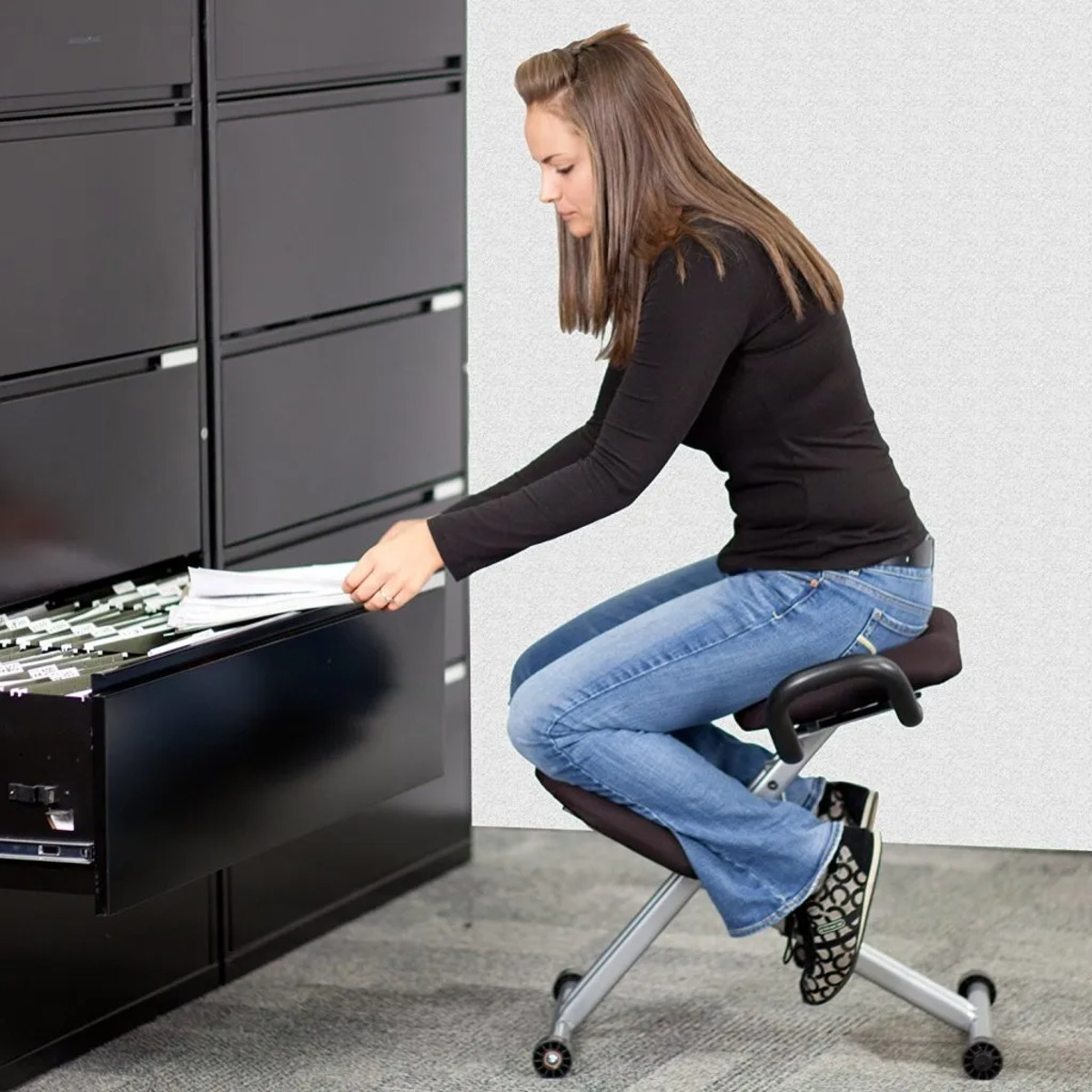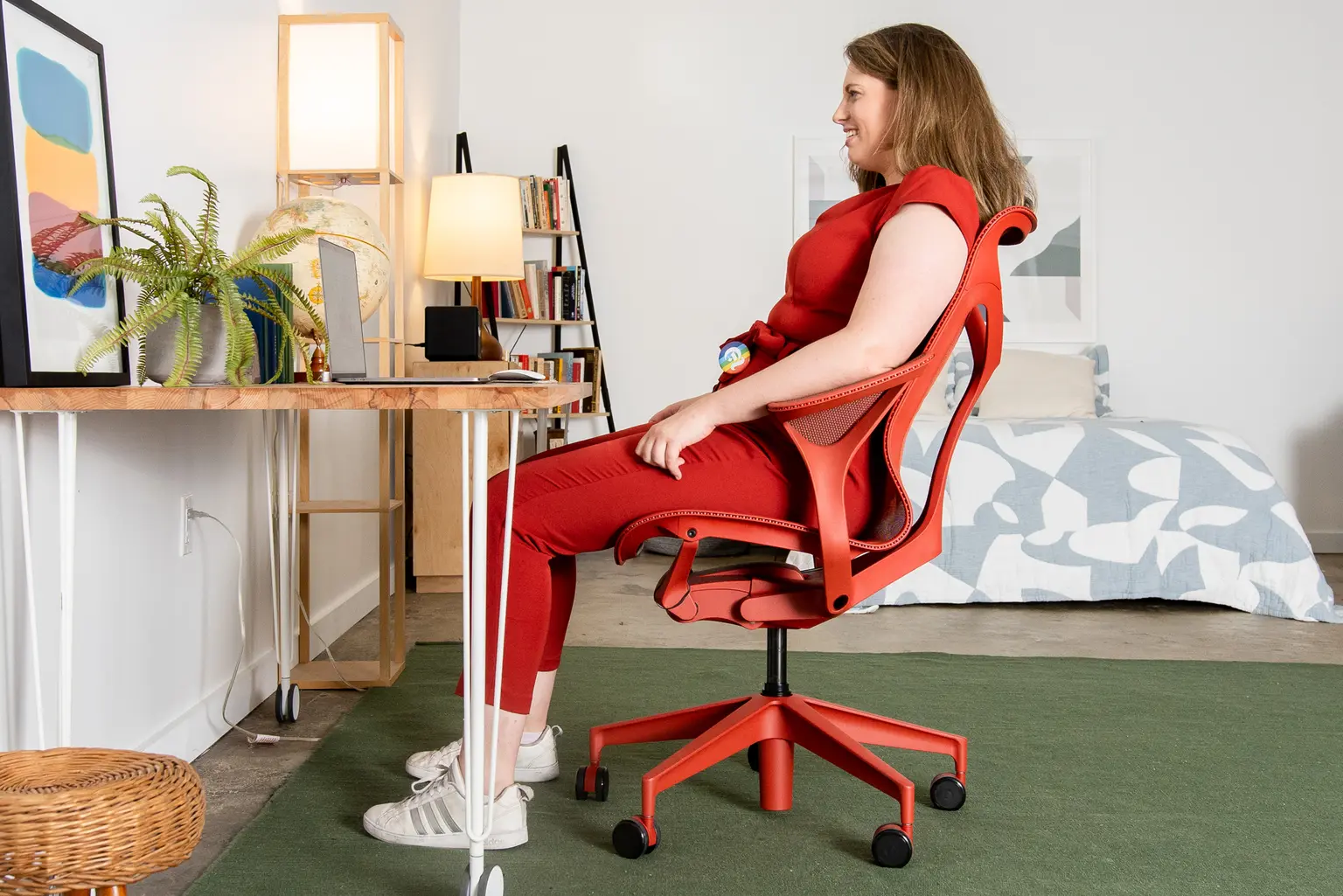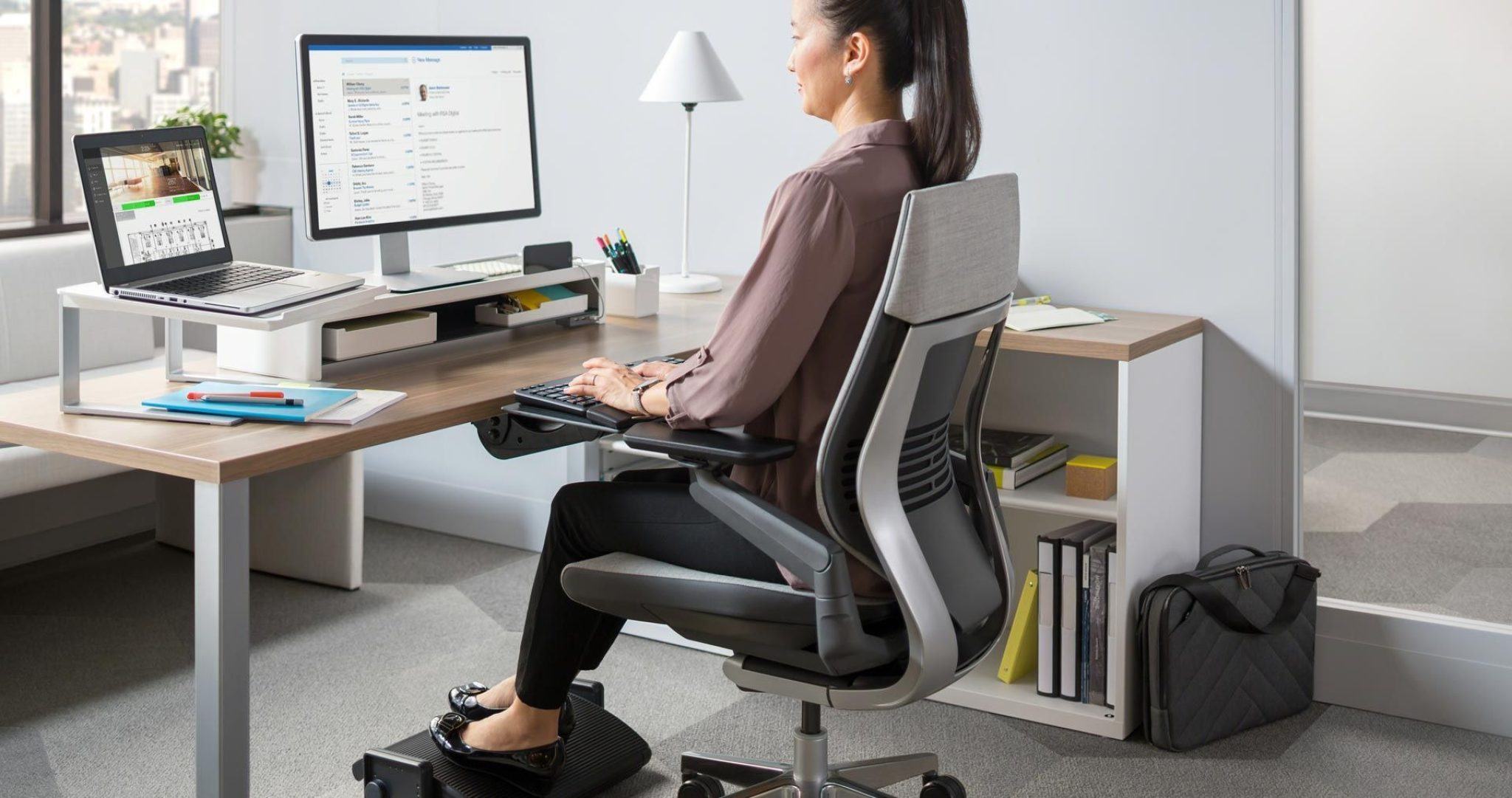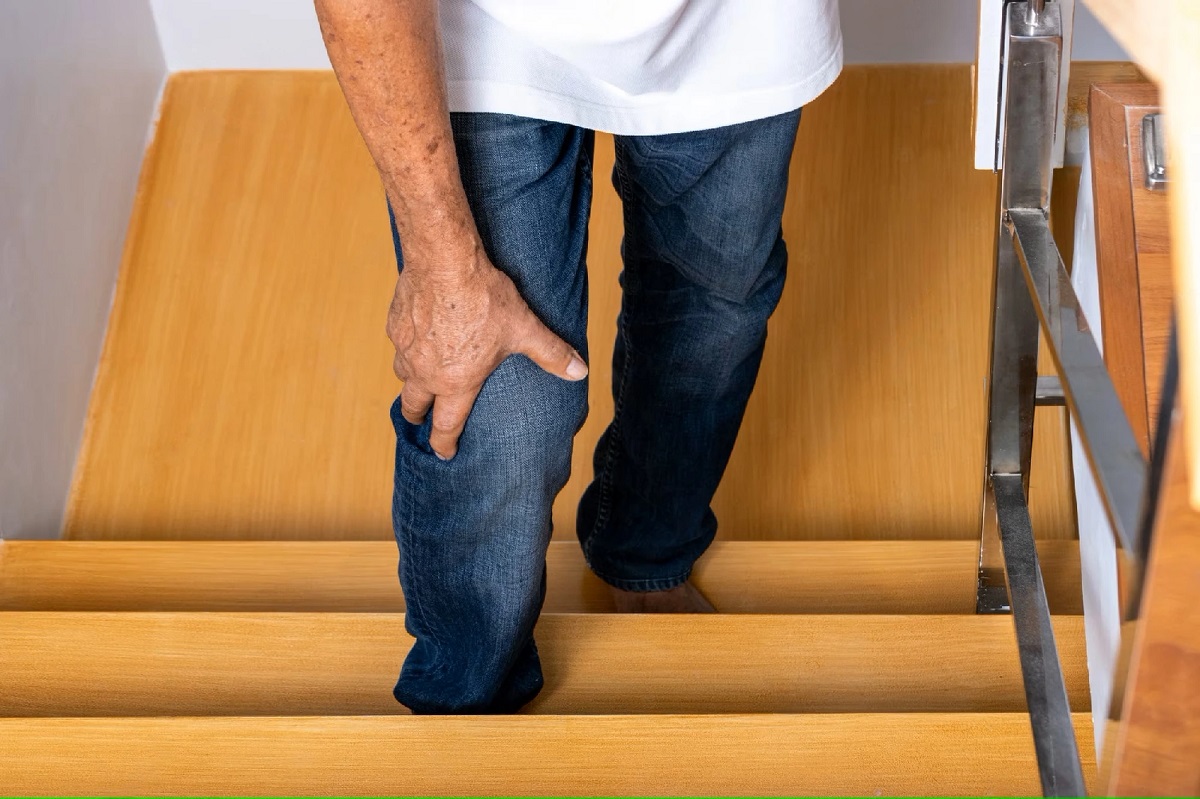Home>Furniture & Design>Office Furniture>Why Does My Tailbone Hurt When I Sit In My Office Chair


Office Furniture
Why Does My Tailbone Hurt When I Sit In My Office Chair
Modified: March 2, 2024
Discover the reasons why your tailbone may hurt when sitting in your office chair. Find solutions and tips for office furniture and design to alleviate discomfort.
(Many of the links in this article redirect to a specific reviewed product. Your purchase of these products through affiliate links helps to generate commission for Storables.com, at no extra cost. Learn more)
Introduction
Read more: How To Sit In An Office Chair
Understanding the Pernicious Pain in Your Tailbone
Are you one of the countless individuals plagued by the discomfort of tailbone pain while sitting in your office chair? You're not alone. This nagging ache can be a persistent and frustrating companion, impacting your daily routine and diminishing your overall well-being. In this comprehensive guide, we'll delve into the intricacies of tailbone pain, exploring its root causes, the effects of prolonged sitting, and practical tips to alleviate this discomfort. By the end of this article, you'll be equipped with the knowledge to reclaim comfort and tranquility during your workday.
Let's embark on this enlightening journey to unravel the mysteries of tailbone pain and discover effective strategies to bid adieu to this unwelcome sensation.
Key Takeaways:
- Tailbone pain when sitting can be caused by factors like poor posture, trauma, and medical conditions. It’s important to understand these causes to find targeted strategies for relief and prevention.
- Prolonged sitting can worsen tailbone pain, affecting physical, emotional, and social well-being. Implementing ergonomic seating, proper posture, and regular breaks can help alleviate discomfort and enhance overall comfort.
Understanding Tailbone Pain
Before delving into the causes and remedies for tailbone pain, it’s essential to comprehend the intricate structure and function of the coccyx, commonly known as the tailbone. Situated at the base of the spine, the coccyx comprises three to five fused vertebrae and serves as a pivotal point for the attachment of various muscles, tendons, and ligaments.
When subjected to prolonged pressure or trauma, the tailbone can become a source of discomfort and anguish. Tailbone pain, also referred to as coccydynia, manifests as a persistent ache or sharp, stabbing sensation in the region surrounding the coccyx. This discomfort is often exacerbated when sitting for extended periods, making it a prevalent concern for office workers, drivers, and individuals with sedentary lifestyles.
Understanding the nuances of tailbone pain empowers individuals to take proactive measures to mitigate its impact on daily life. By gaining insight into the factors contributing to this discomfort, one can adopt targeted strategies to alleviate the pain and prevent its recurrence.
Causes of Tailbone Pain When Sitting
Several factors can contribute to the onset of tailbone pain when sitting, ranging from anatomical anomalies to lifestyle habits. One common cause is direct trauma or injury to the coccyx, which can result from falls, childbirth, or prolonged sitting on hard surfaces. The impact of such incidents can lead to inflammation, bruising, or even fractures in the tailbone, triggering persistent discomfort when seated.
Furthermore, poor sitting posture exerts undue pressure on the tailbone, straining the surrounding muscles and ligaments. Slouching or sitting in a reclined position can disrupt the natural alignment of the spine, leading to increased stress on the coccyx and exacerbating existing pain. Additionally, individuals who are overweight or obese may experience heightened tailbone discomfort due to the increased load borne by the coccyx during sitting.
Medical conditions such as degenerative joint disease, coccygeal spasm, or infections in the surrounding area can also contribute to tailbone pain. These underlying health issues may necessitate professional intervention to address the root cause of the discomfort and alleviate the associated symptoms.
Moreover, women are particularly susceptible to tailbone pain due to its proximity to the reproductive organs and the potential impact of childbirth on the coccyx. During labor, the coccyx may be subject to considerable pressure and displacement, leading to postpartum coccydynia. This condition can persist for an extended period, affecting a mother’s ability to sit comfortably and tend to her daily activities.
Understanding the diverse array of factors that can precipitate tailbone pain when sitting is instrumental in devising tailored approaches to mitigate discomfort. By identifying the specific cause or contributing factors, individuals can adopt targeted strategies to alleviate the pain and enhance their sitting experience.
Effects of Prolonged Sitting on the Tailbone
Prolonged sitting, a hallmark of modern sedentary lifestyles, can exert a profound impact on the tailbone, exacerbating discomfort and giving rise to a myriad of adverse effects. As individuals spend extended hours in office chairs or at desks, the coccyx is subjected to continuous pressure, leading to discomfort that can permeate various aspects of daily life.
One of the primary effects of prolonged sitting on the tailbone is the exacerbation of existing pain or the development of new discomfort. The sustained pressure on the coccyx can intensify inflammation, muscle tension, and ligament strain, amplifying the sensation of discomfort and impeding one’s ability to sit comfortably.
Furthermore, prolonged sitting can contribute to the exacerbation of postural issues, leading to misalignment of the spine and increased strain on the tailbone. Poor sitting posture, characterized by slouching or leaning to one side, can disrupt the natural curvature of the spine, placing undue stress on the coccyx and fostering an environment conducive to persistent discomfort.
Beyond the physical realm, the effects of prolonged sitting on the tailbone extend to emotional and psychological well-being. The persistent discomfort experienced while sitting can engender frustration, irritability, and diminished concentration, impeding one’s productivity and overall quality of life. The psychological toll of enduring chronic tailbone pain can significantly impact an individual’s mental health and emotional resilience.
Moreover, the repercussions of prolonged sitting on the tailbone are not confined to the immediate discomfort experienced during work hours. The residual effects of coccyx-related discomfort can permeate leisure activities, affecting one’s ability to engage in recreational pursuits or partake in social gatherings that involve sitting for extended periods.
Understanding the multifaceted effects of prolonged sitting on the tailbone underscores the importance of proactive measures to alleviate discomfort and mitigate its impact on various facets of daily life. By acknowledging these effects, individuals can implement strategies to promote comfort, enhance posture, and cultivate a more sustainable sitting routine.
Read more: How To Sit In An Office Chair With Back Pain
Tips for Alleviating Tailbone Pain While Sitting
Amid the pervasive challenges posed by tailbone pain during prolonged sitting, implementing targeted strategies can significantly alleviate discomfort and enhance overall well-being. By integrating practical tips into your daily routine, you can reclaim comfort and tranquility during extended periods of sitting.
1. Opt for Ergonomic Seating:
Invest in an ergonomic office chair designed to support the natural curvature of the spine and alleviate pressure on the coccyx. Look for chairs with cushioned seating and adjustable features to customize the support based on your unique comfort needs.
2. Embrace Proper Posture:
Maintain an upright sitting posture, ensuring that your back is well-supported and your tailbone is not subjected to excessive pressure. Distribute your body weight evenly across the seating surface to minimize strain on the coccyx.
3. Utilize Cushions and Supports:
Enhance seating comfort by using specialized cushions or coccyx supports designed to relieve pressure on the tailbone. These accessories can provide targeted support and alleviate discomfort during prolonged sitting sessions.
4. Take Frequent Breaks:
Incorporate regular breaks into your sitting routine to stand, stretch, and walk around. Engaging in brief, gentle movements can alleviate pressure on the tailbone and prevent the exacerbation of discomfort associated with prolonged sitting.
5. Implement Gentle Exercises:
Integrate gentle exercises and stretches into your daily routine to promote flexibility and alleviate muscle tension around the tailbone. Simple movements, such as pelvic tilts and gentle yoga poses, can contribute to enhanced comfort during sitting.
6. Prioritize Weight Management:
Maintain a healthy weight to alleviate excess pressure on the coccyx and minimize the strain experienced during sitting. Embracing a balanced diet and engaging in regular physical activity can contribute to overall well-being and alleviate tailbone discomfort.
7. Seek Professional Guidance:
If persistent tailbone pain significantly impacts your daily life, consult a healthcare professional to explore targeted interventions and therapeutic approaches. From physical therapy to tailored ergonomic recommendations, professional guidance can offer valuable insights into managing and alleviating tailbone discomfort.
By integrating these practical tips into your daily sitting routine, you can proactively address tailbone pain and cultivate a more comfortable and sustainable approach to extended periods of sitting. Empower yourself to reclaim comfort and well-being, transcending the constraints imposed by persistent coccyx-related discomfort.
Read more: Why Does My Recliner Hurt My Back
Conclusion
Embarking on the quest to understand and alleviate tailbone pain while sitting unveils a spectrum of insights and strategies essential for enhancing comfort and well-being. The multifaceted nature of coccyx-related discomfort underscores the significance of adopting targeted measures to mitigate its impact and reclaim tranquility during prolonged sitting.
By delving into the root causes of tailbone pain, from direct trauma to poor sitting posture, individuals gain a profound understanding of the factors contributing to their discomfort. This knowledge serves as a compass, guiding them toward tailored interventions and lifestyle adjustments aimed at alleviating coccyx-related discomfort.
Moreover, the effects of prolonged sitting on the tailbone permeate various facets of daily life, encompassing physical, emotional, and psychological well-being. Recognizing the far-reaching implications of coccyx-related discomfort empowers individuals to implement proactive strategies that transcend the confines of the office chair, fostering a holistic approach to comfort and resilience.
As individuals navigate the realm of tailbone pain, embracing ergonomic seating, proper posture, and targeted supports emerges as pivotal strategies in cultivating a more sustainable sitting routine. By integrating these practical tips into their daily lives, individuals embark on a transformative journey toward enhanced comfort and well-being, transcending the constraints imposed by persistent coccyx-related discomfort.
Ultimately, the pursuit of alleviating tailbone pain while sitting transcends the realm of physical comfort, encompassing a profound quest for holistic well-being. By harnessing the power of knowledge, resilience, and targeted interventions, individuals can reclaim comfort and tranquility, cultivating a sitting experience that harmonizes with their overall well-being.
Armed with these insights and practical tips, individuals are poised to embark on a journey of empowerment, transcending the limitations imposed by coccyx-related discomfort and embracing a renewed sense of comfort and resilience during prolonged sitting.
Frequently Asked Questions about Why Does My Tailbone Hurt When I Sit In My Office Chair
Was this page helpful?
At Storables.com, we guarantee accurate and reliable information. Our content, validated by Expert Board Contributors, is crafted following stringent Editorial Policies. We're committed to providing you with well-researched, expert-backed insights for all your informational needs.













0 thoughts on “Why Does My Tailbone Hurt When I Sit In My Office Chair”